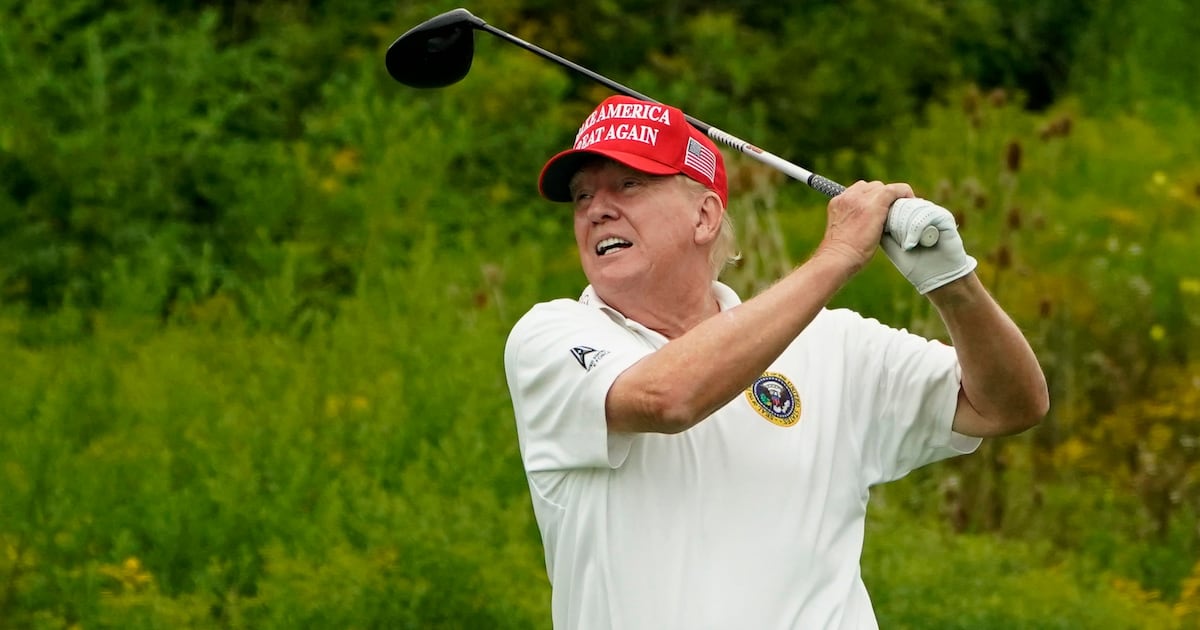
On Wednesday, Oklahoma City Thunder star Kevin Durant was honored with the NBA’s highly-coveted Most Valuable Player award. Yet, while he was winning MVP, beating out four-time winner LeBron James of the Miami Heat, Durant’s teammate, the inimitable Russell Westbrook, was enjoying his unofficial “Most Fashionable Player” award. Preceding the MVP ceremony and OKC’s Game 2 victory over the Los Angeles Clippers, the team’s small forward, Caron Butler, suggested to Westbrook that ESPN magazine should have a fashion issue. Unbeknownst to Butler, that issue already existed—and Westbrook was, naturally, its cover star.
But since when did basketball stars care about fashion? And vice versa? How did the NBA playoffs become akin to Fashion Week when only a few years earlier it would have been unheard of for the kings of basketball to be involved in the style industry? Before April 2008, no African American male—let alone a sports player—had ever appeared on the cover of Vogue. Yet, in that issue, there was LeBron, posing alongside the world’s highest-paid supermodel, Gisele Bundchen, becoming only the third male (after Richard Gere and George Clooney) to cover the fashion glossy. Soon after, players like the New York Knicks’ Tyson Chandler and his teammates Amar’e Stoudemire and Carmelo Anthony began popping up on the pages of the magazine and accompanying Wintour to New York Fashion Week. Since then, NBA players across the country have embraced—and been embraced by—the style savvy. And so a strange, beautiful relationship was born.
GALLERY: Lebron James, Dwyane Wade, Russell Westbrook and More Stylish NBA Players (PHOTOS)

The increased awareness of, and interest in, basketball players’ off-the-court style primarily started over the past year or so. In April 2013, GQ magazine wrote that Westbrook is known in certain fashion circles as “the Kate Moss of the NBA”; Stoudemire was photographed shooting hoops and talking tailor-made suits, bow ties, and dreams of his own fashion line with Vogue’s editor-at-large, Hamish Bowles, and, Monday evening, he walked the red carpet at The Met Gala; following his Vogue cover, James topped GQ’s “Most Stylish Athletes” list and recently covered the magazine’s March issue; and even MVP Durant has dished his “Best Fashion Advice” to Teen Vogue’s Jane Keltner de Valle, where he talked clothing must-haves, including “off-the rack Comme des Garçons t-shirts, Balmain jackets, and Givenchy Henley’s.”
Stylist Rachel Johnson, whose laundry list of big-name sports clients includes Stoudemire, James, the L.A. Clippers’ Chris Paul, and Miami Heat’s Chris Bosh, cites then-NBA commissioner David Stern’s 2005 implementation of a mandatory dress code for all players (which enforced business casual wear when engaged in league activities and prohibited exposed chains and pendants, sleeveless shirts, and wearing sunglasses while indoors) as a major force in shifting the league into high-style gear.
“The resurgence of NBA players dressing like professionals and looking good at games definitely started again after the dress code in 2005,” she says. “In the ’70s and the ’80s, the Larry Birds and the Walt “Clyde” Fraziers prided themselves on looking good and being well-dressed. And then the whole Allen Iverson-era began, and the league basically became a reflection of the rap era. Things changed from a style standpoint, for sure.”
While Iverson is somehow still making a splash in fashion news (The New Yorker recently profiled his signature “sleeve” as an “object of interest”), players like him and Stephen Jackson—notorious for their hip-hop style—were quickly left in the shadows after the league’s newly implemented style restrictions and were replaced by men with a more sophisticated flair for fashion.
The change in the NBA’s dress code, Johnson explains, initiated a new generation of fashion-conscious—and savvy, thanks to their stylists—men. “The media attention [in the past year] has taken off,” she says, “but the advent of NBA gentlemen wanting to look good and realizing that their fashion and style can become directly correlated with their brand has really exploded in the last three years.” It was around the time these changes hit the NBA that the players began calling on professionals for help.
Johnson was introduced to James’s manager in 2005 through another one of her clients, Jay Z, who insisted she meet with the up-and-coming basketball star. It was then that the duo began seamlessly merging the fashion and sports worlds. The Heat’s Dwyane Wade hired his stylist, Calyann Barnett, in 2007. Together, they started introducing new pieces to the NBA’s style game, including bow ties, European-cut suits, and colored pants and eyeglass frames. “A lot of guys wouldn’t have tried it, let alone pull it off,” Lang Whitaker, an editor for the NBA style blog, said of Wade’s slim-fitting Thom Browne-inspired trousers. “Dwyane knew he’d get made fun of on [TNT‘S] ‘Inside (the) NBA,’ but he still wore it and wore it well.” And through these risks—and the help of style professionals—the league’s biggest players have begun to develop their own sartorial voices.
“I think overall, people have become enamored with what [basketball players] can do, being sports figures on the court and then seeing them off the court,” Khalilah Beavers, stylist to Anthony and the Boston Celtics’ Brandon Bass, tells The Daily Beast. “That they can go from a basketball uniform to a fly suit and just look dope. And now they’re in magazines. I think that everyone has embraced their fashion. The past couple of years, it’s gone from like 50 to 150 in terms of how many people are getting into it and how many people are recognizing it.”
Brand Williams, whose clients include the Memphis Grizzlies’ Mike Conley, Matt Barnes of the L.A. Clippers, and Harrison Barnes of the Golden State Warriors (no relation to Matt), agrees that the two industries have an expanding relationship, citing that fashion has become not just the stylist’s duty—but an interest of the players themselves. “The athlete himself doesn’t want to be looked at as just an athlete now,” he tells The Daily Beast. “He wants to be an influencer. He wants to have that cool vibe. Not everybody can be LeBron with endorsement deals that allow him to do that—but everyone with a ‘little’ seven-figure salary,” he says with a laugh, “can make extreme fashion choices and pay to look their absolute best.”
But styling men of unbelievable (and some, un-human-like) heights hasn’t always been a walk in the park. For years, both Johnson and Williams said, it was difficult to find designers willing to accommodate their six-foot-something clients (Bosh and Stoudemire, for example, both stand at 6’11”).
“Everyone was always willing to make a suit,” Johnson says. “But no, I can get a gray suit anywhere. I want the Tom Ford leather motorcycle jacket. I want the Marc Jacobs coat. I want the Michael Bastian cargo pants. I didn’t want any of my clients to feel excluded from fashion, style, or luxury just because of their size.”
Williams explains that, to this day, he has difficulty finding tops sized appropriately for Matt Barnes. “It’s an often occurrence with Matt,” he says. “He has extremely long arms and none of his shirts ever fit. In pictures, you’ll always see his shirts are rolled up or he’s wearing short sleeves, or his pants are always cuffed. If I didn’t do that, his clothes would look so small. He’s 6 ‘8” and his arms are about 37 inches long, but he’s a 40 chest, which is extremely regular.”
For many of these players, however, joining the fashion world meant much more than simply getting new clothes or a stylist. Many have actually upped their fashion game by working with industry insiders or attending some of its biggest events. A decade ago, who would have thought that the Boston Celtics’ Rajon Rondo would add “GQ Fashion Intern” to his resume? That Westbrook would be sitting front row at the Rag & Bone and Altuzarra shows during New York Fashion Week? That Stoudemire would travel all the way to Paris to see Lanvin’s Spring/Sumer 2013 menswear presentation?
According to Johnson, Stoudemire was always a “style guy.” But when he moved to New York City to join the Knicks in 2010, “not only did he gain the access [to luxury brands] after he and I started working together, but it also gave him the opportunity to be exposed to and to become immersed in the fashion community,” Johnson says. “He [designed] a line with Rachel Roy, he built a relationship with Calvin Klein where he could go in and work with Italo Zucchelli [the creative director] and look at fabrics and really become a part of the process as opposed to just wearing the clothes.”
For every Wade, Paul, and James in their classic bow ties, bespoke suits, and tailored blazers, however, there are also those players who have taken things to the next level. Tyson Chandler, a veteran of taking sartorial risks, has seemingly influenced a new generation of players taking style chances. “I started to look at fashion the same way I look at my games,” he told GQ in April 2013. “There’s always going to be someone watching you for the first time.” With a slew of furry “pimp” jackets, sleeveless pea coats, and a self-described “Johnny Cash” aesthetic, Chandler has since been named the “resident risk taker of the New York Knicks.” Following in his footsteps are Westbrook, who has become recognized for his arguably outrageous get-ups, which include M&M screen-printed polo shirts and tight red leather pants. In April 2013, Matt Barnes sported a custom-made wooden bow tie to Game 4 of the playoffs against the Thunder and caused a media flurry. Two weeks ago, he debuted a wooden hat at Game 3 of his team’s fight also against the Oklahoma City team.
Regardless of the sartorial ridiculousness that may ensue off the court, it’s undeniable that the NBA has been influenced by (and in many ways, has influenced) the fashion world.
“Me and you got something in common; they like to talk about the way we dress,” Wade told reporter Craig Sager, who was sporting a plaid suit, after the NBA finals in June 2013. “You like it?” Sager asked the basketball star.
“I love it,” he grinned.





